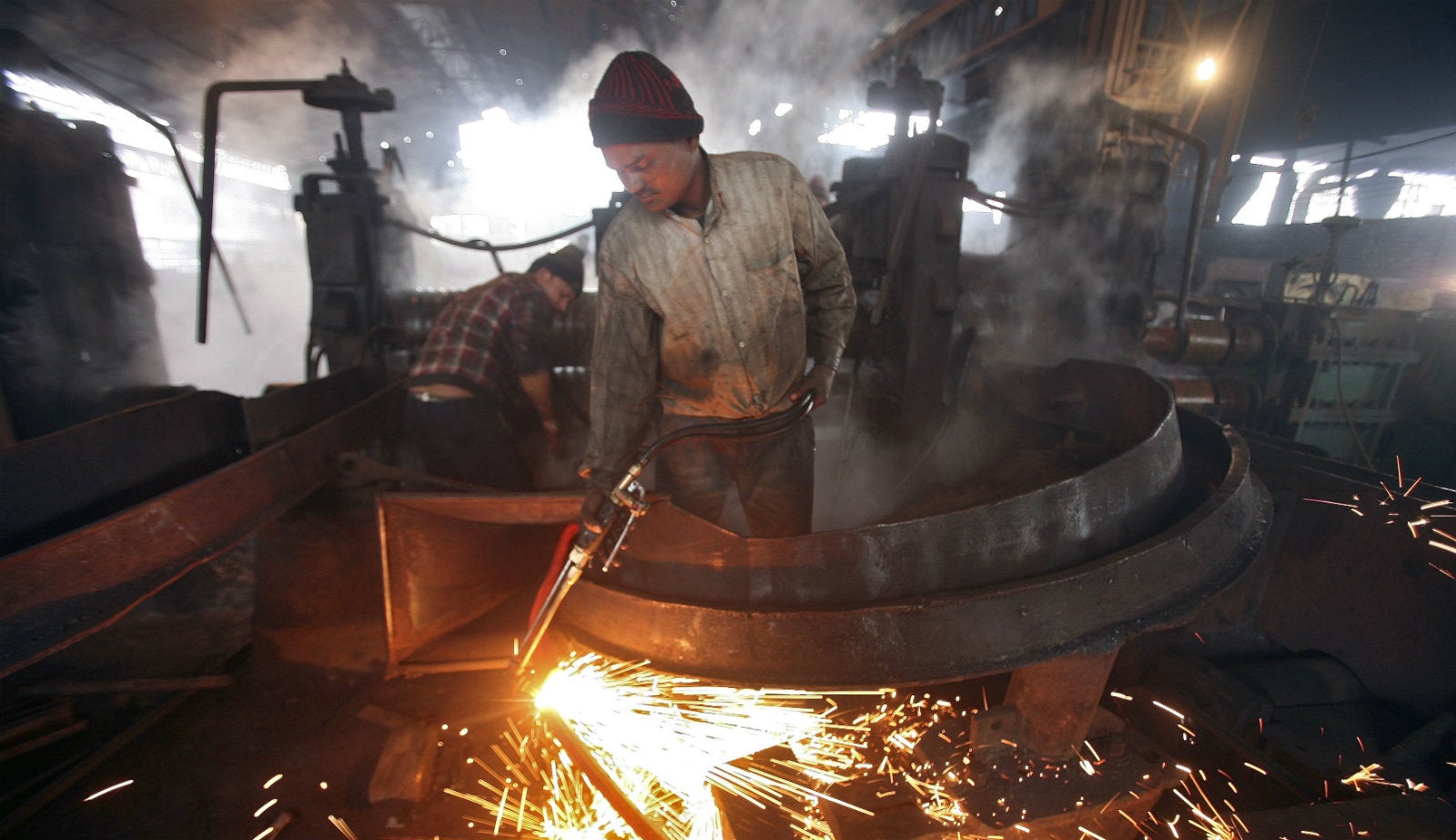Is the Indian economy headed for a middle-income trap?
Will a developing country, with a fast-growing economy, eventually break into the ranks of rich nations? This transition, however obvious it may seem, is not a given.


Will a developing country, with a fast-growing economy, eventually break into the ranks of rich nations? This transition, however obvious it may seem, is not a given.
Once promising economies like Mexico, Brazil, or Turkey could never attain the prosperity of western Europe or Japan, because they fell into what experts call the “middle-income trap.” Coined in 2006 by World Bank economists Indermit Gill and Homi Kharas, the term refers to a sustained economic slowdown following a period of strong growth.
Is India, which began sprinting towards the goal of a high-income economy after economic liberalisation in the 90s, headed for such a trap?
Advance data released by India’s Central Statistics Office (CSO) on Jan. 7 suggests that GDP growth in the current financial year will fall to 5%, the slowest since the 2008 crisis.
The current slowdown, which comes after a period of strong growth, signals India risks falling into a middle-income trap, as many economists have warned.
Early warnings
In May last year, Rathin Roy, then a member of prime minister Narendra Modi’s economic advisory council, warned that India’s growth is faltering at lower-middle-income levels (per capita income between $1,000 and $3,800). Without a course correction, the economy risks falling into a middle-income trap, he said.
“We will be a Brazil, we will be a South Africa” but will never replicate the growth trajectories of China, or South Korea, Roy warned. “No country which has been in (a middle-income trap) has been able to come out of it.”
Matters have only aggravated since Roy’s warning.
India’s factory output contracted for three consecutive months from August to October last year and rural wages plunged by 3.8% in September. Many economists have said that India’s economy is facing a structural slowdown.
“If there is no course correction, it would be difficult for India to achieve 7-8% annual economic growth,” said Gill, now a professor of public policy at Duke University. “This would mean that India won’t even become an upper middle-income country (per capita income between $3,896-12,055) by the 2030s,” Gill told Quartz.
Escaping the middle-income trap requires serious reforms such as flexible land and labour laws. The Narendra Modi government, on the other hand, is obsessed with furthering its political agenda with laws like the Citizenship Amendment Act, Gill added. “If this persists, we can forget about a 7-8% annual growth; we’d be going back to half that amount—what used to be called the ‘Hindu rate of growth’…I’d be concerned if India did not worry about the potential of falling into the (middle income) trap,” Gill said.
Root causes and fixes
The economic reforms that India unleashed in 1991 led to a period of strong growth lifting millions out of poverty and increasing the size of the economy by almost nine times in about 30 years. However, unlike China and other prosperous east Asian nations, there was no mass shift from farm to factories. India failed to create a robust manufacturing sector, which today accounts for less than 17% of the economic output.
Rather, India’s economic growth has been powered by investments in the services sector, which could only create a few million high-skilled jobs, thereby forcing a staggering 81% of the workforce to be employed in the informal sector.
This flawed model ensured that the economic growth, which took off in the 90s, was not sustainable.
Policymakers should now focus on easing India’s business climate to attract more investments and not worry too much whether the investment goes into agriculture, manufacturing, or services sectors, Gill says. The manufacturing sector, though, is most important because it is labour-intensive.
Gill also suggests implementing land and labour reforms to bring capital costs down. These, he says, are the primary fixes that would ensure India does not fall into the middle-income trap.
Micheal Walton, a professor at Harvard Kennedy School and fellow at the Centre for Policy Research in New Delhi, says India’s declining investment rates, high levels of capital concentration in the corporate sector, and lack of good infrastructure access are deeply concerning indicators. This tallies with the experience of countries such as Brazil and Mexico. “There are real risks of India falling into the (middle-income trap,” said Walton.
He suggests long-term structural reforms and provision of better social security to people who have not benefited from India’s growth.
Invest in human capital
The Asian Development Bank has found that unequal income distribution is another key driver of the middle-income trap and suggests higher investments in human capital to escape it.
India, however, has very low levels of human capital growth for an ambitious and fast-growing major economy. The World Bank ranked India at a lowly 115th out of 157 countries in its Global Human Capital Index rankings released last year.
“We have made investments in infrastructure (but) that is less of a concern than human capital,” says Himanshu, a professor at the Centre for Economic Studies and Planning in Jawaharlal Nehru University in New Delhi. “No country has moved to high-income category without taking care of these bottlenecks.”
We welcome your comments at [email protected].